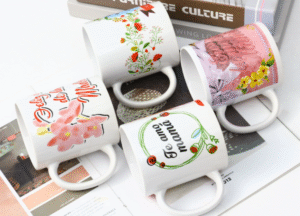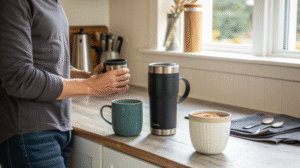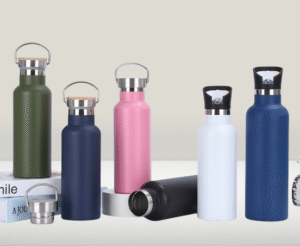Choosing the right water bottle for your brand can feel impossible. With endless options, a wrong move can lead to a failed product and wasted investment.
To choose the right bottle, analyze four key areas: material (health and durability), lid (functionality), size (lifestyle fit), and design (brand identity). The perfect bottle aligns all four with your target customer.
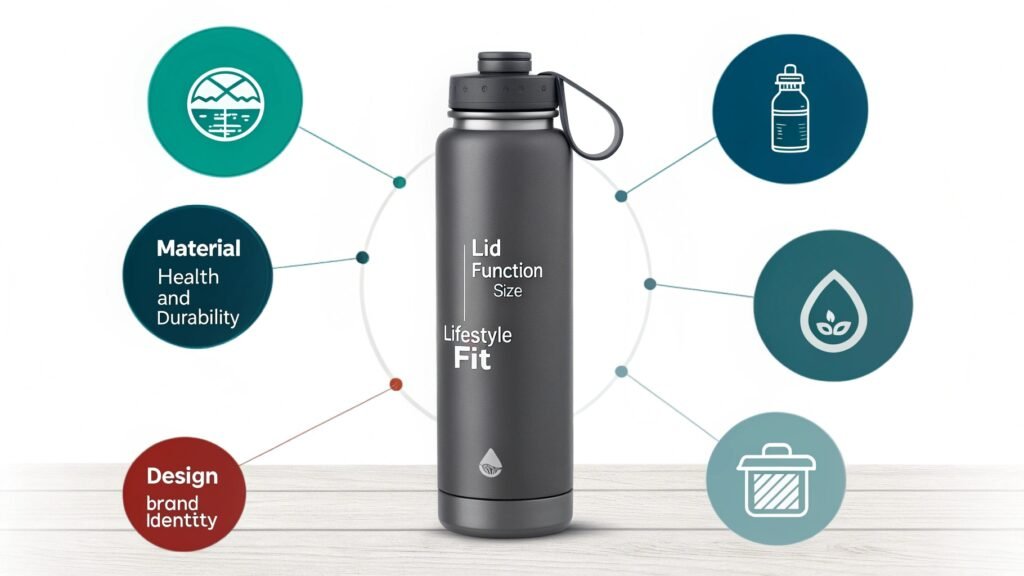
As someone who has guided countless partners through this process, I can tell you that a successful bottle is never an accident. It’s the result of deliberate choices. I've seen brands skyrocket because they obsessed over the lid design, and others fail because they chose a size that didn't fit in a car's cup holder. Understanding the core decision points is what separates a bestseller from a clearance item. Let's walk through the critical questions you need to answer.
What is the healthiest type of water bottle to use?
Health concerns over plastics like BPA are at an all-time high. Choosing a material that customers perceive as unsafe can destroy your brand’s reputation and lead to costly problems.
Glass and food-grade stainless steel are the healthiest choices as they are inert and won't leach chemicals. For plastics, high-quality, certified BPA-free options like Tritan are an excellent and safe alternative that offers durability and lightness.
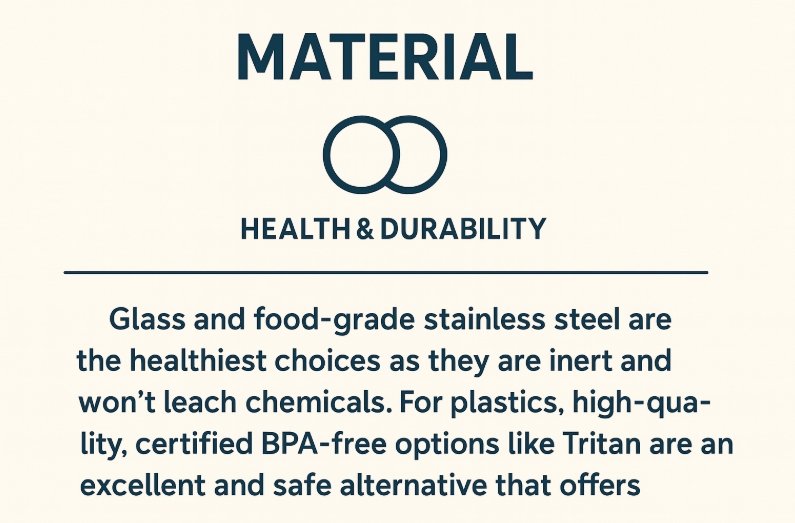
When I help a brand develop a kids' bottle line, safety is our number one priority. We don't just say it's safe; we prove it. This means focusing on materials that are not only certified BPA-free but also inert, meaning they don't react with their contents. It's about providing a guarantee of purity. Your customer is drinking from your product every day, and they need to trust that it's keeping them healthy, not exposing them to harm.
A Material Safety Breakdown
For a product developer like Emily, "healthy" means two things: the material must not leach harmful chemicals, and it must not alter the taste of the water. Your material choice is the foundation of your product's promise of health and quality.
- Glass: This is the purist's choice. It is completely inert, so it offers the cleanest, most unadulterated taste. Borosilicate glass, in particular, is resistant to thermal shock. The downsides are its weight and fragility, which we often mitigate by pairing it with a protective silicone sleeve.
- 18/8 Stainless Steel: This is the industry gold standard for a reason. "18/8" refers to its composition of 18% chromium and 8% nickel, which makes it highly resistant to rust and corrosion. It's inert, incredibly durable, and doesn't impart any metallic taste. For insulated bottles, it's the undisputed champion.
- Performance Plastics (Tritan & PP): It’s crucial to educate consumers that not all plastics are equal. Materials like single-use PET are different from engineered reusable plastics. Tritan is a tough, BPA-free copolyester that offers glass-like clarity and durability without the weight. Polypropylene (PP) is often used for lids because it's rugged and safe. Always ensure your plastic materials are FDA-approved and CPSC-certified, especially for children's products.
What should you look for when buying a water bottle?
A bottle is so much more than a simple container. If you overlook critical details like lid design or cleanability, you risk a flood of poor reviews and a failed product launch.
Look beyond the material. Scrutinize the lid for a truly leak-proof seal. Check the mouth's width for easy cleaning and adding ice. Finally, consider the ergonomics—how it feels in hand and fits into daily life, like in a cup holder.
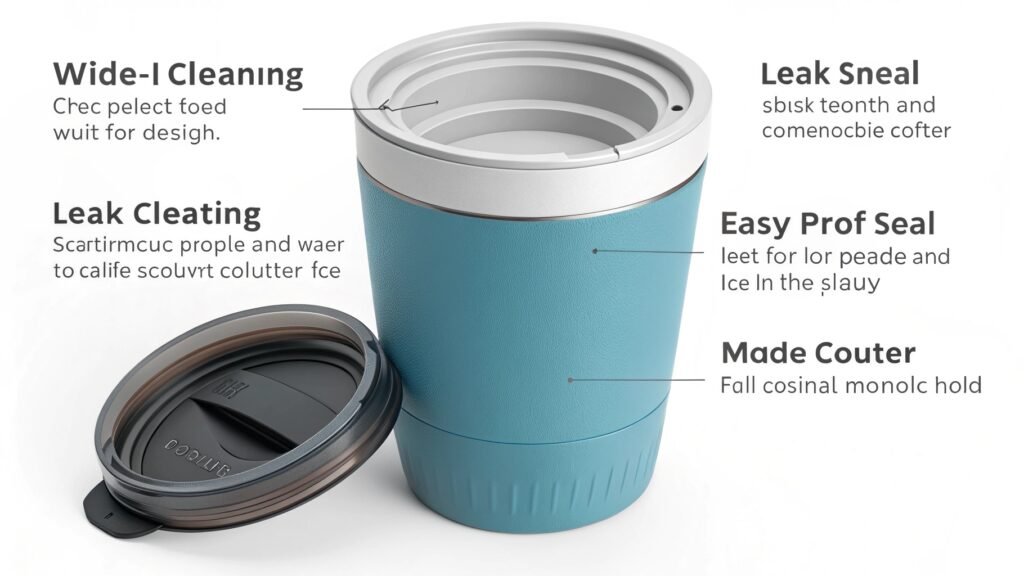
I once worked with a startup that had a beautifully designed bottle. The color was perfect, the material felt premium. But they used a cheap silicone gasket in the lid. Within three months, customer complaints about leaking poured in. They had focused on the body but forgotten the single most critical point of failure. We had to recall the batch and re-engineer the lid. It was an expensive lesson: every single detail matters.
A Developer's Checklist for a Winning Bottle
As a product developer, your job is to think like the end-user. Every decision you make affects the product's daily usability. Here is a checklist I use with my partners to ensure we are creating a bottle that people will love.
| Feature | Why It Matters | Pro-Tip for Developers |
|---|---|---|
| Lid System | This is the #1 source of failure (leaks) and user interaction. | Invest in high-quality silicone seals. Offer interchangeable lids (straw, chug, screw-on). |
| Mouth Opening | Affects cleaning, filling, and drinking style. | A wide mouth is easier to clean and add ice to. A narrow mouth can be easier to drink from without spilling. |
| Ergonomics | How the bottle fits into the user's life, from hand to bag to car. | Test prototypes in various cup holders. Consider a textured powder coat for better grip. |
| Durability | A reusable bottle must withstand daily wear and tear. | Use high-grade 18/8 steel. For plastic, choose impact-resistant Tritan. A quality powder coat finish prevents chipping. |
| Ease of Cleaning | If a bottle is hard to clean, it will develop odors and won't be used. | Design with minimal hard-to-reach crevices. Clearly state if parts are dishwasher-safe. |
Why is Gen Z so obsessed with water bottles?
You see water bottle brands like Stanley go viral with Gen Z. But if you don't understand the "why" behind this trend, you can't capitalize on it, leaving huge opportunities behind.
Gen Z sees water bottles as a key personal accessory, just like a smartphone case or a pair of sneakers. It's a status symbol that signals their personal style, wellness values, and commitment to sustainability.
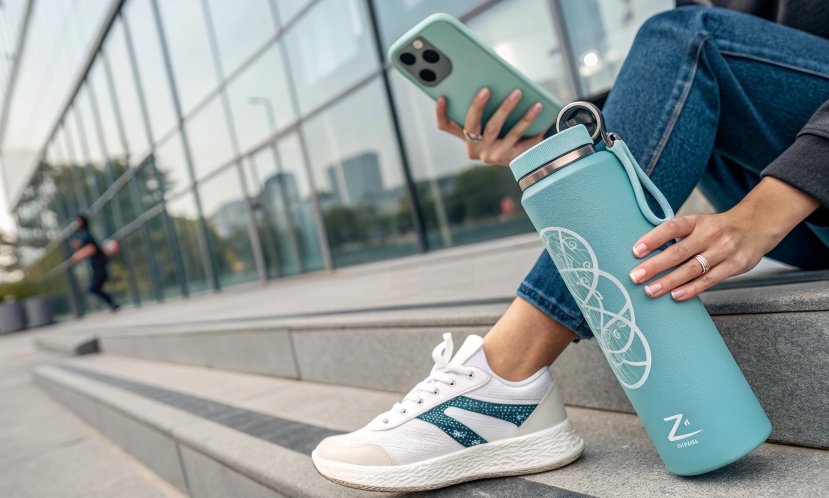
It's fascinating. For previous generations, a bottle was a utility. For Gen Z, it's part of their identity. I was talking to a young designer who called her water bottle "part of her fit." It had to match her outfit. They add stickers, charms, and custom carriers. They don't just buy a bottle; they curate it. Understanding this shift from utility to accessory is absolutely essential for any brand that wants to connect with this powerful consumer group.
Decoding the Gen Z Bottle Phenomenon
For a product developer like Emily, tapping into the Gen Z market means understanding that you are designing an accessory first and a utility item second. The bottle is a character in their social media story.
- Accessorization and Self-Expression: The bottle is a canvas for personality. This is why color is so incredibly important. Limited edition color drops create hype and a sense of urgency (FOMO). Designs should accommodate personalization, like a smooth surface for stickers or loops for attaching keychains and charms. The Stanley Quencher's success is tied as much to its colors and handle as its function.
- Sustainability as Identity: This generation has a high level of climate anxiety. Using a reusable bottle is a simple, visible way for them to perform their values. It says, "I care about the planet." Your brand's messaging should reinforce this, highlighting sustainable materials and ethical production.
- The "That Girl" Wellness Culture: Online wellness trends have romanticized daily routines. Waking up early, doing yoga, and drinking lots of water are all part of an aspirational aesthetic. The water bottle is a primary prop in this narrative. It's a symbol of self-care and discipline.
- Community and Social Proof: When a product goes viral on TikTok, it becomes a membership card to a cultural moment. Owning the "it" bottle means you're in the know. Brands can foster this by creating community hashtags and encouraging user-generated content.
What is the best size water bottle for daily use?
Choosing the right sizes for your product line feels like a gamble. If you go too big, your bottles are not portable. If you go too small, they aren't practical. The wrong choice leads to unsold inventory.
The best size depends on lifestyle. A larger 32-40 oz (1-1.2L) bottle is perfect for all-day desk hydration. A more portable 20-26 oz (600-750ml) bottle is ideal for travel, commuting, and fitting into cup holders.
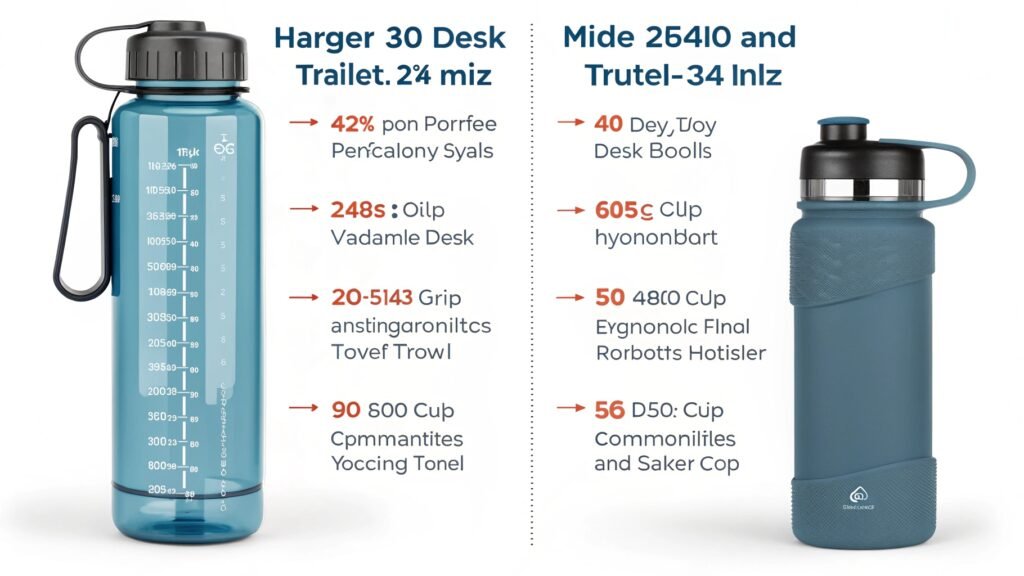
My advice to new brands is almost always the same: don't try to offer every size at once. It's better to launch with two carefully selected sizes that serve the two biggest user groups. I suggest starting with a "commuter" size and a "desk" size. For example, a 24-ounce model that fits in cup holders and a 40-ounce model for maximum capacity. This focused approach reduces complexity and allows you to market each size with a clear purpose.
Sizing Strategy for Your Drinkware Line
For a developer, size isn't just a dimension; it's a feature that defines the product's use case. A strategic size range allows you to meet different customer needs effectively.
| Size (approx.) | Target User & Lifestyle | Key Development Considerations |
|---|---|---|
| 16-20 oz (Small) | Kids, coffee drinkers, short trips, purses. | Must be very leak-proof. Often benefits from a simple, one-handed lid. |
| 24-26 oz (Medium) | The "Goldilocks." Commuters, daily errands, gym-goers. | Must fit in standard car and gym equipment cup holders. This is a critical design constraint. |
| 32-40 oz (Large) | Desk workers, athletes, all-day hydrators. | Often includes a handle for easier carrying. Portability is secondary to capacity. |
| 64 oz+ (Jug) | Hardcore athletes, manual laborers, family outings. | Needs a robust handle. The lid design must be able to handle the weight of the water without failing. |
By thinking in terms of these user personas, you can build a product line where every size has a clear reason to exist. This makes it easier for customers to choose the right bottle for them and easier for you to market your products effectively.
Conclusion
Choosing the right water bottle means balancing material, function, style, and size. When you get these elements right, you create an essential tool that customers will use and love every day.

